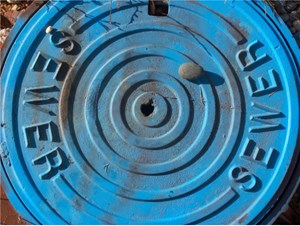Connecticut receives $580 million in funding for sewer system improvements
(UC) — Connecticut Governor Ned Lamont announced a $580 million investment in construction-ready municipal water pollution control projects to protect the state's waters from sewage pollution and improve water quality.
The projects announced today are on the Clean Water Fund Priority List, the state’s roadmap for administering state and federal Clean Water Funds, one of the most important resources available to protect and improve water quality.
These funds, spread over two years, include $507 million in state funding supplemented by $73 million in federal funding, which was augmented by the recently adopted Bipartisan Infrastructure Law (BIL), helping to make this list of projects even more expansive than in the past. The priority list also identifies the use of supplemental BIL funds to provide additional opportunities for sanitary sewer overflow mitigation projects in Connecticut’s distressed communities, which is in line with the state’s policy on environmental equity.
“The projects on this list, infused with funding from the Bipartisan Infrastructure Law, will help our cities and towns to properly manage and treat their wastewater, and in turn help make our waterways cleaner,” Governor Lamont said. “These projects will also mobilize many good-paying jobs and strengthen supply chains as construction gets underway. Modernizing our infrastructure and making our communities more resilient is exactly what President Biden means by, ‘Build Back Better.’”
The Clean Water Fund continues to prioritize project funding to address significant water quality concerns such as Combined Sewer Overflow (CSO) elimination and/or mitigation projects, Nutrient (Nitrogen or Phosphorus) Removal projects, and Small Community pollution abatement projects.
In total, the priority list will support 18 construction ready projects with an approximate total cost of $580 million and offer about $245 million for projects eligible for reserve category funding (cost increases, planning, design, small community, infiltration and inflow rehabilitation, pump station rehabilitation, green infrastructure, resiliency, and collection system improvement).
Municipalities may continue to submit applications for these reserve funds through the end of the 2022-23 fiscal year.
Related News
From Archive

- Glenfarne Alaska LNG targets late-2026 construction start for 807-mile pipeline project
- U.S. water reuse boom to fuel $47 billion in infrastructure spending through 2035
- $2.3 billion approved to construct 236-mile Texas-to-Gulf gas pipeline
- Major water pipe break in Puerto Rico hits over 165,000 customers
- Potomac River Tunnel project enters construction phase beneath Washington, D.C.
- Pennsylvania American Water launches interactive map to identify, replace lead water service lines
- Trump's tariffs drive $33 million cost increase for Cincinnati sewer project
- Utah city launches historic $70 million tunnel project using box jacking under active rail line
- Tulsa residents warned after sewer lines damaged by boring work
- Fatal trench collapse halts sewer construction in Massachusetts; two workers hospitalized




Comments